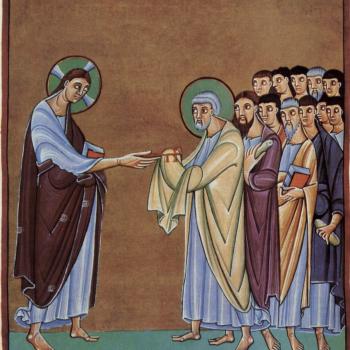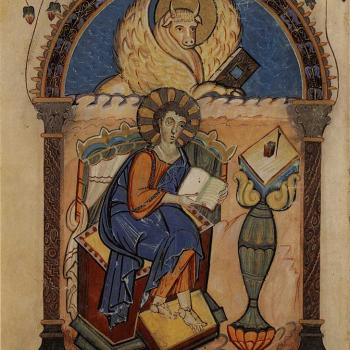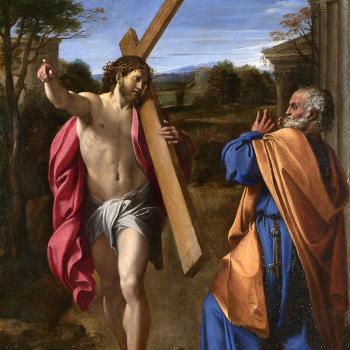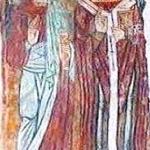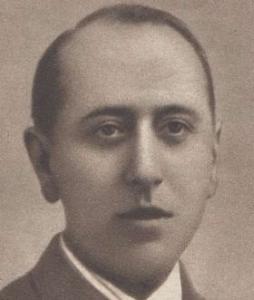

(Wikimedia Commons)
In his monograph on the Spanish Civil War, Stanley Payne dedicates a chapter to what he calls “the breakdown of democracy”, wherein he narrates the unravelling of the Spanish Second Republic. In it, he includes a number of citations from some of the key players which give significant insight into what they were witnessing and how they were processing it at the dawn of the civil war. This post seeks to introduce and contextualize some of these, which are in blue font below. I have opted to construct one long blog post (in lieu of a few separate ones) so that all of the information is easily accessible in one spot.
Background
The Spanish Second Republic was declared in 1931, in the wake of municipal elections held across the country and the subsequent flight of King Alfonso XIII from the country. From the outset, it was dominated by the left (mainly Republicans and Socialists) who sought to move the country in a new direction, despite the fact that a large proportion of the population was conservative and not on board with the reforms.[1] The Republic proved itself hostile towards the Catholic Church by separating Church and state for the first time in Spain’s history, and by enacting anticlerical legislation such as eliminating Church salaries (which had been substituted for the confiscation of Church lands in 1837), passing regulations on religious orders with the aim of expelling the Jesuits, and ending religious education and replacing it with a secular model.[2] The anticlerical and secularizing policies of the new government infuriated Spanish Catholics,[3] and though the country had become increasingly secularized since the beginning of the nineteenth century, “Catholicism was still the predominant religion and could still mobilize more support than any individual political movement”.[4]
The Spectrum of Spanish Politics
For their part, conservative Catholics opted to work within the Republican system by establishing their own political parties, the largest of which was the Confederación Española de Derechas Autónomas (CEDA), founded in 1933 and led by José María Gil Robles. There were two monarchist parties, each backing rival claimants to the throne: the Communión Tradicionalista (Carlist), and Renovación Española (Alfonsine). The Carlists took their name from Carlos María Isidro de Borbón, brother of King Ferdinand VII (r. 1821 – 1822), and supported the former as heir when the latter died, thereafter remaining loyal to that line. Since Ferdinand VII was succeeded by his daughter Isabella II, her lineage remained in possession of the throne until the inception of the Second Republic and the flight of Alfonso XIII. Renovación Española then, supported the restoration of that king. There was also the fascist party, the Falange Española, started by Antonio Primo de Rivera, son of the former dictator of the 1920’s, Miguel Primo de Rivera. All of these backed the Nationalists during the civil war. The one Catholic party who did not was the Partido Nacionalista Vasco (PNV), which was in favor of Basque autonomy.
The left, which backed the Republic, consisted of a conglomeration of political groups ranging from Republican to Communist. Of the two Republican parties, the Partido Radical Rebublicano (PRR) was the largest, and the other, the Esquerra Republicana de Catalunya, ran the Catalan government after being granted regional autonomy in 1932. The Partido Socialista Obrero Española (PSOE) was the main Socialist party and had significant influence, but the Communist PCE (Partido Comunista de España) increased in power with the entry of the Soviet Union into the civil war. Finally, there was the Partido Obrero de Unificación Marxista (POUM), which was Communist but anti-Stalinist, and ultimately suppressed in 1937 after the arrival of the Soviets. Apart from these there were anarchist organizations such as the syndicalist Conferederación Nacional del Trabajo (CNT), and the Federación Anarquista Ibérica (FAI).[5]
The Coming Storm
According to Julián Cassanova, the Second Republic ultimately failed due to increasing political polarization and violence, civil unrest, and after 1935, the inability of the Republic to restore order, partly because the political allies of those holding power were among those involved in the violence and unrest. The most dramatic manifestations of civil unrest that he mentions are anarchist uprisings in 1932 and 1934, as well as an attempted rightist backed military coup by General Sanjurjo in 1932.[6] As Payne notes, by April of 1936, the burning of religious buildings, demonstrations in towns (often accompanied by violence and arson), worker occupation of farmlands, and roaming hit squads (primarily Socialists and Communists, and Falangists), all became common place in Spain.[7] “Political violence”, he asserts, “was initiated primarily by the left, but Falangists tried to give as good as they got”. The Republic outlawed the Falange (“Phalanx”), which in turn drove it underground and caused its ranks to swell.[8] Thus, Payne reproduces part of an article published in the Barcelona newspaper La Vanguardia on June 12, 1936, which reads:
‘How many votes did the fascists have in Spain in the last election? None: a ridiculously small amount…. Today, travelers returning from different parts of the country are saying: ‘There everybody is becoming a fascist.’ What kind of change is this? What has happened? What has happened is simply that it is no longer possible to live, that there is no government…. In such a situation, people instincttively look for a way out…. What is the new political form that radically represses all these insufferable excesses? A dictatorship, fascism. And thus almost without wanting to, almost without realizing it, people begin to feel themselves fascist. They know nothing about the inconveniences of a dictatorship, which is natural. They will learn about these later on, when they have to suffer them.
Fascism is, in the cases of France and Spain, the sinister shadow projected across the land by democracy itself, when its internal decomposition turns it into anarchy. The more the rot spreads, the more fascism expands.’[9]
Here, fascism is seen as a response to the breakdown of order, but just as the left did not consist of only Communists, the right was not monolithically fascist, as indicated by the political groupings above. Nevertheless, perception seems to have been at odds with reality, to the extent that, as Michael Burleigh notes, “[w]hen in October 1934 three cedistas joined the government, the left reacted as if there had been a ‘Fascist’ coup, for in their minds the CEDA represented ‘clerico-fascism’, just as conservatives regarded all liberals and leftists as blood-crazed Bolsheviks.”[10] However, this was not a perception shared by all, for in discussing possible ways out of the political conundrum of 1936, Payne quotes the Socialist leader Indalecio Prieto, who remarked that: ‘It is unjust to consider all rightists as fascists. The fascist danger doesn’t exist unless it is generated by the left.’[11] In this he seemed particularly insightful, and unlike others in his party and on the far left, Prieto was not calling for revolution and he sought to avoid the coming conflict.[12] Another seeking solutions was the centrist Republican Miguel Maura, who in an article published in the Madrid periodical el Sol, noted that:
‘in rural and provincial affairs the anonymous, radicalized masses rule through the governors controlled by the Jacobin committees of the Popular Front [the coalition of the left], whose disorders and excesses are legalized by the mayors and specially appointed presidents of provincial boards, a veritable Bolshevist plague that is devastating the country. Peaceful citizens live with the sensation that laws are a dead letter and that arson, assaults, destruction of property, insults, murders, and aggression against the armed forces no longer count in the penal code for those who wear a red and blue shirt [United Socialist Youth] or the insignia of the hammer and sickle. The clenched fist is safeconduct and talisman for the greatest excesses.
There could not fail to be a reaction. This has taken shape in the alarming form of what is called ‘fascism’. People have joined that movement en masse…though of authentic Italian Fascism it has only the name and a few of the doctrinal postulates, of which the majority of its affiliates are ignorant.
Today the Republic is no more – though I would like to believe unconsciously – than the tool of the violent revolutionary sector of the working classes, which, shielded by the liberal democratic system and the blindness of certain leaders of the Republican parties, is preparing in minute detail its assault on the government and the extermination of capitalist and middle-class society…. They tell us so themselves in their newspapers and public meetings.
If the Republic is to be this, it is inexorably condemned to swift extinction at the hands of those who claim to be its defenders or, which is more probable, at the hands of a reaction from the opposite direction.’[13]
Much like Prieto above, Maura seems to have a firm grasp of events happening around him, and of the coming danger if such a breakdown of the social order was not arrested. On the contrary and as Payne asserts, President Manuel Azaña envisioned a pipe dream in which the Republic would be exclusively governed by the left. As such, Azaña rejected the idea of a coalition of the center-left, center, and center-right, with the only other possibilities being a rightist or leftist dictatorship.[14] Payne gives a bullet pointed litany of unconstitutional actions taken by the Republic between February and July of 1936, before deploying the following words by CEDA’s head Gil Robles, made in response to these violations:
‘I know that you are carrying out a policy of persecution, violence, and extermination against everything that is rightist. But you are profoundly mistaken: however great may be the violence, the reaction will be greater still. For everyone killed another combatant will rise up…. You who today are fostering violence will become the victims of it. The phrase that revolutions, like Saturn, devour their own children is commonplace, but no less true for being so. Today you are complacent, because you see an adversary fall. But the day will come when the same violence that you have unleashed will be turned against you.’[15]
With the benefit of hindsight, Gil Robles’ words almost appear prophetic. Still, the writing seemed to be on the wall, and the situation was worsened by the political assassination of José Calvo Sotelo, leader of the pro-Alfonso XIII monarchist faction Renovación Española.[16] As Hilari Raguer notes: “both Right-and-Left-wing voters had gone to the polls on 16 February 1936 firmly resolved, if they lost, not to allow the results. Since the Popular Front triumphed, it fell to the Right to rise in revolt.”[17] The manner in which this occurred, he says, was via the Hispanic tradition of the pronunciamiento (pronouncement), citing the words of Juan Rico y Amat, which he says apply to the situation in 1936. In part they read: ‘The Pronunciamiento is the political Messiah whose coming some hope for and others fear. When situations become rather turbulent, nothing is talked about but the Messiah of the pronunciamiento.’[18]
This pronouncement was made by General Francisco Franco on July 18, 1936, who was then stationed on the Canary Islands.[19] Franco made his way to his base of operations in Morocco, where he had climbed up the ranks during the Moroccan Wars of the 1920’s, but he would need the aid of Mussolini to airlift his battle hardened “Moroccan Army Corps” across the Straits of Gibraltar. General Emilio Mola operated out of Navarre, across the Pyrenees from France.[20] This attempted military coup failed to accomplish its objective of a quick takeover of the government, subsequently sparking a revolution among the far left. This in turn set off tremendous violence by the revolutionaries, including, in the estimation of Antonio Montero Moreno, the killing of 12 bishops, 4,184 Priests, 2,653 monks, and 283 nuns, and to this can be added an unknown number of laity, all within a period of six months.[21] It is not surprising then that, due to the anti-Catholic track record of the Republic coupled with the anti-clerical violence, the vast majority of Spanish Catholics, including almost all of the Spanish Episcopate, sided with Franco’s Nationalists.
The war was declared to be a ‘Crusade’ against Bolshevism, and the Spanish Episcopate laid out its position in a Collective Letter addressed to Catholic Bishops throughout the world, in 1937. The rhetoric of the ‘Crusade’ need not detain us here and the result of the civil war is known to all. Payne’s book puts the event within the context of other twentieth century conflicts, noting that “[t]he bloodlust in revolutionary civil wars stems from the apocalyptic nature of such contests, the attempt on each side to create a new society and cultural order…totally purged of antagonistic elements….”[22] By the time the Nationalists secured the unconditional surrender of the Republican army in 1939, Franco had already consolidated the remaining political parties, namely the Falange and the Carlists, into a single political entity named the FET y de las JONS (Falange Española Tradicionalista y de las Juntas de Ofensiva Nacional Sindicalista). In keeping with his conception (and that of the Falangists) of a united traditional Spain in the mold of Ferdinand and Isabella’s, he went on to establish “a unitary and authoritarian state that permitted varying degrees of limited but traditional pluralism”, which lasted until his death in 1975.[23]
[1] Stanley G. Payne, The Spanish Civil War, (New York: Cambridge University Press, 2012): 14-15.
[2] (Church and state): Stanley G. Payne, Spanish Catholicism: An Historical Overview, (Madison: University of Wisconsin Press, 1984): 154. (Anticlerical legislation): The Republic also legalized divorce. Hugh Thomas, The Spanish Civil War, (New York: Harper & Brothers, 1961): 46. Cf. Michael Burleigh, Sacred Causes: The Clash of Religion and Politics from the Great War to the War on Terror, (New York: Harper Collins, 2007): 129.
[3] Payne, Spanish Catholicism, 154
[4] (Secularization): Burleigh, Sacred Causes, 129. Cf. Payne, Spanish Catholicism, 155-156. (Catholic mobilization): Payne, The Spanish Civil War, 14.
[5] Apart from the CEDA, all of these political groups and most of the information provided were taken from Julián Casanova, The Spanish Republic and Civil War, Trans. Martin Douch, (New York: Cambridge University Press, 2010), 344-346.
[6] Ibid, 147-148. The latter occurred in Asturias in the Basque region and was put down by General Francisco Franco and his troops from Morocco.
[7] Payne, The Spanish Civil War, 39.
[8] Ibid, 45.
[9] Ibid.
[10] Burleigh, Sacred Causes, 129-130.
[11] Payne, The Spanish Civil War, 50.
[12] Ibid, 49-50.
[13] Ibid, 51.
[14] Ibid, 50.
[15] Ibid, 61.
[16] Payne sees this as a major catalyst for the civil war. Payne, The Spanish Civil War, 61-62, cf. 69, 70
[17] Hilari Raguer, Gunpowder and Incense: The Catholic Church and the Spanish Civil War, trans. Gerald Howson, (New York: Routledge, 2007): 36.
[18] Ibid, 38.
[19] Casanova, The Spanish Republic, 142.
[20] Base of operations: Raguer, Gunpowder, 39.
[21] Ibid, 126-127.
[22] Payne, The Spanish Civil War, 103. He continues: “In these conflicts the enemy is perceived as a kind of metaphysical incarnation of evil that must be eradicated…”
[23] (Falange): Stanley G. Payne, Fascism in Spain, 1923–1977, (Madison: University of Wisconsin Press, 1999): 254. (Franco): Ibid, 268. (Nature of Franco regime): Ibid, 271. For an overview of the repression that occurred on both sides during and after the war see Julius Ruiz, “Seventy Years on: Historians and Repression during and after the Spanish Civil War.” Journal of Contemporary History 44, no. 3 (July, 2009): 449-472.



